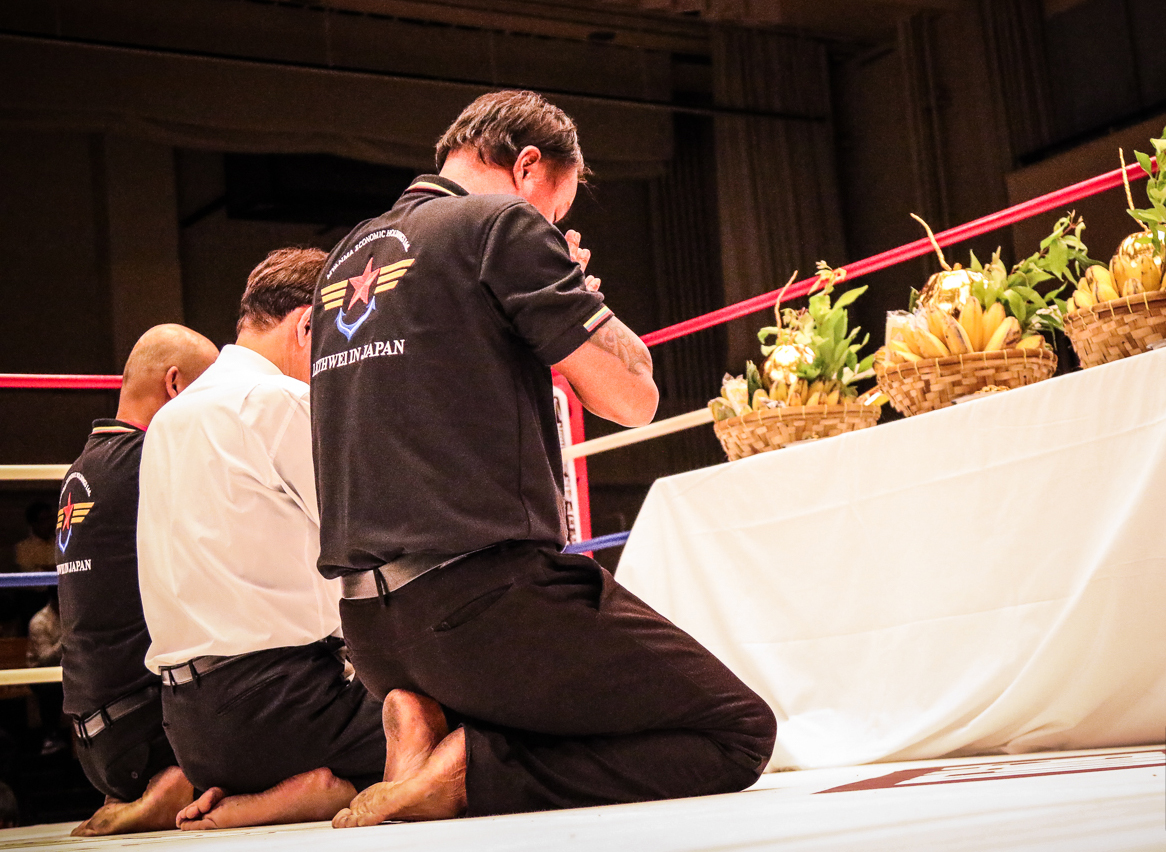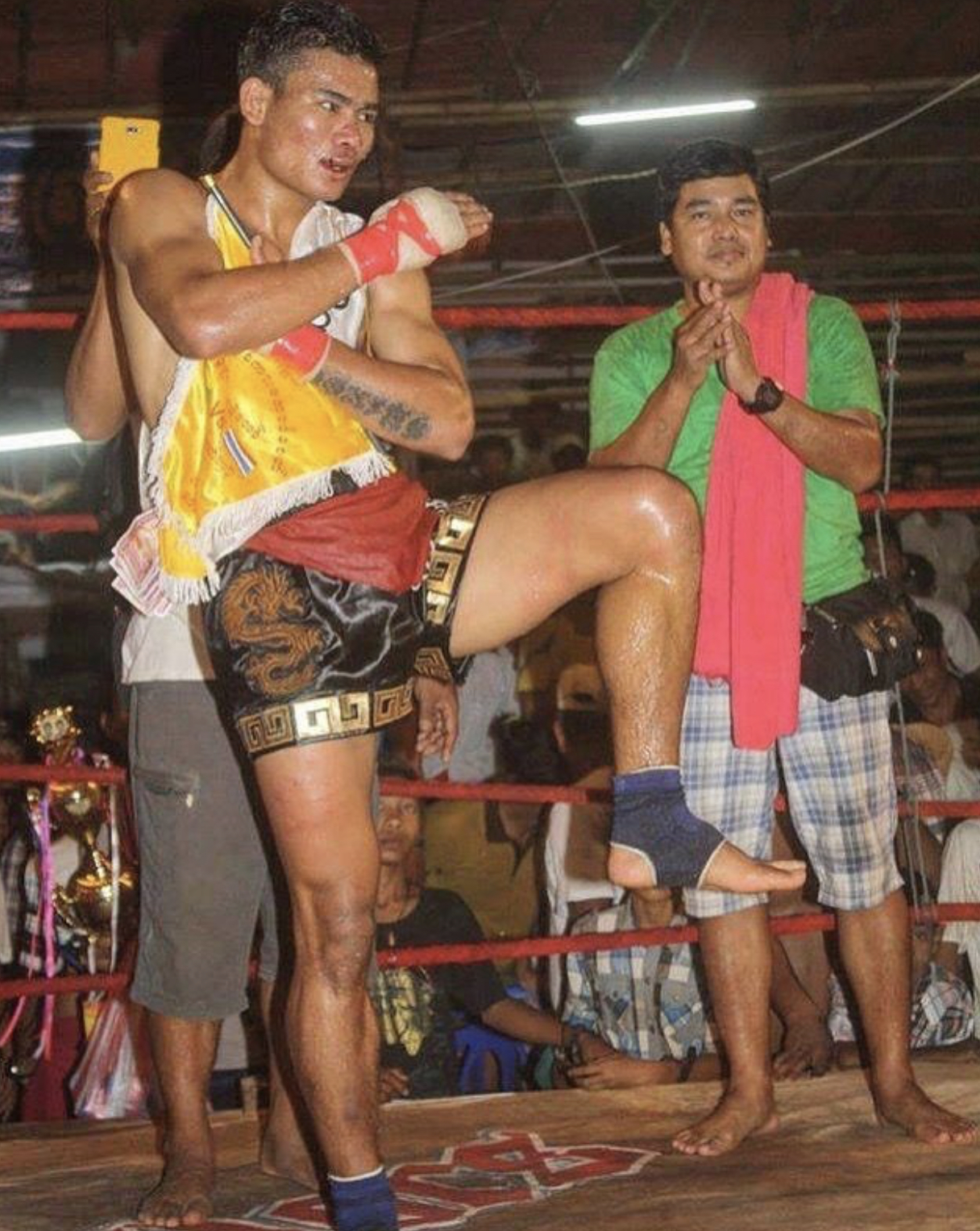LETHWEI AMERICA

Lethwei as a Combat Sport, Part 2
“Lethwei is linked to the identity of Myanmar . . .
it is a combat sport, a fighting art, and a culture.”
– Sayar Win Zin Oo
Lethwei, in addition to its unique fighting methodology, would not be what it is without its vibrant and charismatic traditions. One of these traditions, the opening ceremony, takes place at the beginning of the Lethwei match. The opening ceremony is conducted according to traditional customs to promote a fortunate outcome between the fighters. The referees and match organizers conduct the ceremony. Various fruits—coconuts, bananas, and pineapples, betel leaves, and red grass are placed in large dishes. Also in the dishes are several old coins, lighted candles, and lighted incense sticks. The referees and organizers then circle around the corners of the ring accompanied by the orchestra, which plays a special melody for the occasion. Once the ceremony has been completed, the contest begins.1,2,3

Contests are accompanied by traditional Myanmar music performed by an ensemble called the Saing Waing. The Saing Waing consists of drums, hnae, cymbals and bamboo clappers, and performs during the opening ceremony, during the rituals, and throughout the tournament. It is integral to every Lethwei fight, both big and small. When accompanying the ceremony and rituals prior to the fights, the music played by the Saing Waing is called Lay Kin. Music played during the fights themselves is called Bane Maung. The volume and tempo of the music rises and falls along with energy of the fight. The tempo of the music increases at the start of the fight and reaches a frenzied pitch during clashes and exchanges between boxers.1,2,3,4
The bout begins with each competitor performing a rhythmic and relaxed fighter’s dance called the Lethwei Yay. The Lethwei Yay is a warrior dance intended to display the skill and courage of the fighter and said to pay homage to Buddha and to Khun Cho and Khun Tha, the Nats (spirits) whose domain includes Myanmar Lethwei. Lethwei Yays vary according to region, ethnicity, and boxing club. The Lethwei Yay is performed by each fighter prior to the initiation of the contest. This dance is performed again at the end of the fight by the winner.1,2,3,4
The traditional Letkkha Moun gesture is also performed by boxers before and after the fights, as well as part of the Lethwei Yay. The Letkkha Moun involves placing the left hand under or on top of the right shoulder and slapping the bent left elbow three times with the right palm. Southpaws may perform the Letkkha Moun to the other side. Former champions and legends in retirement also perform this gesture between two bouts. Some fighters even perform it during a fight, sometimes as a challenge, and sometimes to signal that they did not feel the blow dealt by their opponent. Occasionally, even the referees and jury members will perform the Lethwei Yay which includes Letkkha Moun before the Lethwei fight begins.1,2

Lethwei boxer’s apparel is simple. In addition to gauze or hemp wrapped hands, fighters also compete barefoot except for occasionally wearing anklets to absorb perspiration. Simple, dark-colored shorts rather than baggy boxing trunks are usually worn. If the shorts worn by the contestants appear too similar in color, the fighters may wear a small longyi (a small sarong-type of garment) folded in the form of a triangle wrapped around the waist. The fighter’s longyi is typically worn over the front of the shorts to make it easier for spectators to differentiate the opponents. It also covers those areas of the fighter’s body (the groin) that are illegal to strike.1,4
Traditionally, every boxer had tattoos on his legs that symbolized manhood, skills and courage. Colorful tattoos on the legs were believed to give boxers supernatural strength, durability, skill and speed. Ancient Burmese, Thai, Laotians, Mon and Kayin boxers tattooed their legs, arms and bodies with meaningful designs and patterns. Temple and royal boxers often had their chest tattooed with animal designs such as tigers, and cobras, or mythological images such as ogres and dragons. The practice of tatooing is not as common today as it was in the past.2,4
References
1 Courderette, M. (2017). Lethwei: Myanmar Traditional Boxing. Ginger Editions Publisher
2 Zin Oo, Win (2019). Communications.
3 MMAlife.com. (2017). The Burmese Martial Art of Lethwei. https://10 MMAlife.com/the-burmese-martial-art-of-lethwei/
4 Gyi, M. (2000). Bando: Philosophy, Principles, and Practice. Private Publication.